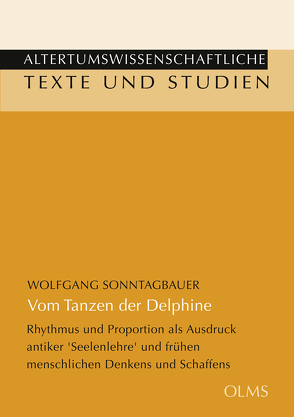
Der Beliebigkeit der heutigen Vorstellung von Rhythmus wird der mythisch-kyklische Rhythmusbegriff entgegengestellt, der alle Bereiche der griechischen Musiké, der 'Musenkunst', umfasst. Nicht nur die Einheit von Musik, Tanz und Sprache ist damit gemeint, sondern auch die Musiké der sakralen Architektur, der Malerei und der Plastik, d. h. aller Bereiche frühen menschlichen Denkens und Schaffens. Die in griechischer Sicht aus Begrenztem und Unbegrenztem, Gemessenem und Unmessbarem, Rationalem und Irrationalem, Bewusstem und Unbewusstem, Menschlichem und Numinosem bestehende Wirklichkeit ist komplementär, d. h. die Gegensätze sind in ihrer Uneindeutigkeit untrennbar miteinander verwoben und gehen ineinander über. Diese nicht objektive, nicht allein den Kategorien von Raum, Zeit und Kausalität unterworfene 'seelische' Wirklichkeit der Griechen kann mit rational-positivistischen Mitteln allein nicht erschlossen werden, sondern es müssen vor allem die Bilder des Mythos bzw. der mythischen 'Philosophie' befragt und zur Deutung herangezogen werden. Die Gestalt und die Entwicklung des Rhythmus bis in die Spätantike sollen vor allem anhand der antiken Metrik, der Musik- und der Proportionstheorie gezeigt werden.****************The arbitrariness of today's notion of rhythm is contrasted with the mythical-cyclical concept of rhythm, which encompasses all areas of the Greek musiké, the 'art of the muse'. Not only the unity of music, dance and language is meant by this, but also the musiké of sacred architecture, of painting and sculpture, i.e. all areas of early human thought and artifacts. Reality, which in the Greek view consists of the limited and the unlimited, the measured and the immeasurable, the rational and the irrational, the conscious and the unconscious, the human and the numinous, is thought to be complementary: in their ambiguity, the opposites are inextricably interwoven and merge into one another. This 'spiritual' reality of the Greeks is non-objective, not solely subject to the categories of space, time and causality; it cannot be unlocked by rational-positivistic means alone, rather the images of myth or mythical 'philosophy' ought to be consulted and be used for interpretation. The character and the development of rhythm up to late antiquity will be demonstrated primarily on the basis of ancient metrics, music and proportion theory.
Aktualisiert: 2023-06-30
> findR *
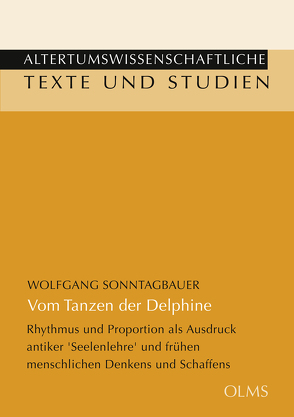
Der Beliebigkeit der heutigen Vorstellung von Rhythmus wird der mythisch-kyklische Rhythmusbegriff entgegengestellt, der alle Bereiche der griechischen Musiké, der 'Musenkunst', umfasst. Nicht nur die Einheit von Musik, Tanz und Sprache ist damit gemeint, sondern auch die Musiké der sakralen Architektur, der Malerei und der Plastik, d. h. aller Bereiche frühen menschlichen Denkens und Schaffens. Die in griechischer Sicht aus Begrenztem und Unbegrenztem, Gemessenem und Unmessbarem, Rationalem und Irrationalem, Bewusstem und Unbewusstem, Menschlichem und Numinosem bestehende Wirklichkeit ist komplementär, d. h. die Gegensätze sind in ihrer Uneindeutigkeit untrennbar miteinander verwoben und gehen ineinander über. Diese nicht objektive, nicht allein den Kategorien von Raum, Zeit und Kausalität unterworfene 'seelische' Wirklichkeit der Griechen kann mit rational-positivistischen Mitteln allein nicht erschlossen werden, sondern es müssen vor allem die Bilder des Mythos bzw. der mythischen 'Philosophie' befragt und zur Deutung herangezogen werden. Die Gestalt und die Entwicklung des Rhythmus bis in die Spätantike sollen vor allem anhand der antiken Metrik, der Musik- und der Proportionstheorie gezeigt werden.****************The arbitrariness of today's notion of rhythm is contrasted with the mythical-cyclical concept of rhythm, which encompasses all areas of the Greek musiké, the 'art of the muse'. Not only the unity of music, dance and language is meant by this, but also the musiké of sacred architecture, of painting and sculpture, i.e. all areas of early human thought and artifacts. Reality, which in the Greek view consists of the limited and the unlimited, the measured and the immeasurable, the rational and the irrational, the conscious and the unconscious, the human and the numinous, is thought to be complementary: in their ambiguity, the opposites are inextricably interwoven and merge into one another. This 'spiritual' reality of the Greeks is non-objective, not solely subject to the categories of space, time and causality; it cannot be unlocked by rational-positivistic means alone, rather the images of myth or mythical 'philosophy' ought to be consulted and be used for interpretation. The character and the development of rhythm up to late antiquity will be demonstrated primarily on the basis of ancient metrics, music and proportion theory.
Aktualisiert: 2023-06-30
> findR *
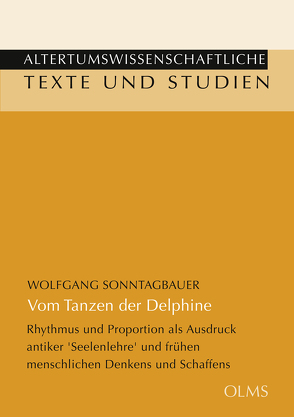
Der Beliebigkeit der heutigen Vorstellung von Rhythmus wird der mythisch-kyklische Rhythmusbegriff entgegengestellt, der alle Bereiche der griechischen Musiké, der 'Musenkunst', umfasst. Nicht nur die Einheit von Musik, Tanz und Sprache ist damit gemeint, sondern auch die Musiké der sakralen Architektur, der Malerei und der Plastik, d. h. aller Bereiche frühen menschlichen Denkens und Schaffens. Die in griechischer Sicht aus Begrenztem und Unbegrenztem, Gemessenem und Unmessbarem, Rationalem und Irrationalem, Bewusstem und Unbewusstem, Menschlichem und Numinosem bestehende Wirklichkeit ist komplementär, d. h. die Gegensätze sind in ihrer Uneindeutigkeit untrennbar miteinander verwoben und gehen ineinander über. Diese nicht objektive, nicht allein den Kategorien von Raum, Zeit und Kausalität unterworfene 'seelische' Wirklichkeit der Griechen kann mit rational-positivistischen Mitteln allein nicht erschlossen werden, sondern es müssen vor allem die Bilder des Mythos bzw. der mythischen 'Philosophie' befragt und zur Deutung herangezogen werden. Die Gestalt und die Entwicklung des Rhythmus bis in die Spätantike sollen vor allem anhand der antiken Metrik, der Musik- und der Proportionstheorie gezeigt werden.****************The arbitrariness of today's notion of rhythm is contrasted with the mythical-cyclical concept of rhythm, which encompasses all areas of the Greek musiké, the 'art of the muse'. Not only the unity of music, dance and language is meant by this, but also the musiké of sacred architecture, of painting and sculpture, i.e. all areas of early human thought and artifacts. Reality, which in the Greek view consists of the limited and the unlimited, the measured and the immeasurable, the rational and the irrational, the conscious and the unconscious, the human and the numinous, is thought to be complementary: in their ambiguity, the opposites are inextricably interwoven and merge into one another. This 'spiritual' reality of the Greeks is non-objective, not solely subject to the categories of space, time and causality; it cannot be unlocked by rational-positivistic means alone, rather the images of myth or mythical 'philosophy' ought to be consulted and be used for interpretation. The character and the development of rhythm up to late antiquity will be demonstrated primarily on the basis of ancient metrics, music and proportion theory.
Aktualisiert: 2023-06-29
> findR *
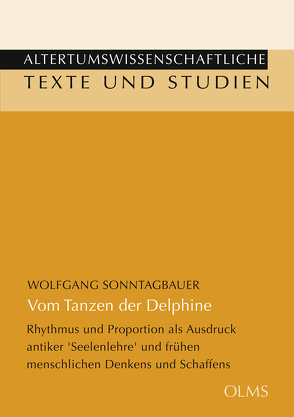
Der Beliebigkeit der heutigen Vorstellung von Rhythmus wird der mythisch-kyklische Rhythmusbegriff entgegengestellt, der alle Bereiche der griechischen Musiké, der 'Musenkunst', umfasst. Nicht nur die Einheit von Musik, Tanz und Sprache ist damit gemeint, sondern auch die Musiké der sakralen Architektur, der Malerei und der Plastik, d. h. aller Bereiche frühen menschlichen Denkens und Schaffens. Die in griechischer Sicht aus Begrenztem und Unbegrenztem, Gemessenem und Unmessbarem, Rationalem und Irrationalem, Bewusstem und Unbewusstem, Menschlichem und Numinosem bestehende Wirklichkeit ist komplementär, d. h. die Gegensätze sind in ihrer Uneindeutigkeit untrennbar miteinander verwoben und gehen ineinander über. Diese nicht objektive, nicht allein den Kategorien von Raum, Zeit und Kausalität unterworfene 'seelische' Wirklichkeit der Griechen kann mit rational-positivistischen Mitteln allein nicht erschlossen werden, sondern es müssen vor allem die Bilder des Mythos bzw. der mythischen 'Philosophie' befragt und zur Deutung herangezogen werden. Die Gestalt und die Entwicklung des Rhythmus bis in die Spätantike sollen vor allem anhand der antiken Metrik, der Musik- und der Proportionstheorie gezeigt werden.****************The arbitrariness of today's notion of rhythm is contrasted with the mythical-cyclical concept of rhythm, which encompasses all areas of the Greek musiké, the 'art of the muse'. Not only the unity of music, dance and language is meant by this, but also the musiké of sacred architecture, of painting and sculpture, i.e. all areas of early human thought and artifacts. Reality, which in the Greek view consists of the limited and the unlimited, the measured and the immeasurable, the rational and the irrational, the conscious and the unconscious, the human and the numinous, is thought to be complementary: in their ambiguity, the opposites are inextricably interwoven and merge into one another. This 'spiritual' reality of the Greeks is non-objective, not solely subject to the categories of space, time and causality; it cannot be unlocked by rational-positivistic means alone, rather the images of myth or mythical 'philosophy' ought to be consulted and be used for interpretation. The character and the development of rhythm up to late antiquity will be demonstrated primarily on the basis of ancient metrics, music and proportion theory.
Aktualisiert: 2023-06-29
> findR *
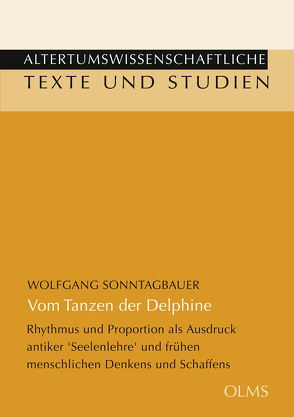
Der Beliebigkeit der heutigen Vorstellung von Rhythmus wird der mythisch-kyklische Rhythmusbegriff entgegengestellt, der alle Bereiche der griechischen Musiké, der 'Musenkunst', umfasst. Nicht nur die Einheit von Musik, Tanz und Sprache ist damit gemeint, sondern auch die Musiké der sakralen Architektur, der Malerei und der Plastik, d. h. aller Bereiche frühen menschlichen Denkens und Schaffens. Die in griechischer Sicht aus Begrenztem und Unbegrenztem, Gemessenem und Unmessbarem, Rationalem und Irrationalem, Bewusstem und Unbewusstem, Menschlichem und Numinosem bestehende Wirklichkeit ist komplementär, d. h. die Gegensätze sind in ihrer Uneindeutigkeit untrennbar miteinander verwoben und gehen ineinander über. Diese nicht objektive, nicht allein den Kategorien von Raum, Zeit und Kausalität unterworfene 'seelische' Wirklichkeit der Griechen kann mit rational-positivistischen Mitteln allein nicht erschlossen werden, sondern es müssen vor allem die Bilder des Mythos bzw. der mythischen 'Philosophie' befragt und zur Deutung herangezogen werden. Die Gestalt und die Entwicklung des Rhythmus bis in die Spätantike sollen vor allem anhand der antiken Metrik, der Musik- und der Proportionstheorie gezeigt werden.****************The arbitrariness of today's notion of rhythm is contrasted with the mythical-cyclical concept of rhythm, which encompasses all areas of the Greek musiké, the 'art of the muse'. Not only the unity of music, dance and language is meant by this, but also the musiké of sacred architecture, of painting and sculpture, i.e. all areas of early human thought and artifacts. Reality, which in the Greek view consists of the limited and the unlimited, the measured and the immeasurable, the rational and the irrational, the conscious and the unconscious, the human and the numinous, is thought to be complementary: in their ambiguity, the opposites are inextricably interwoven and merge into one another. This 'spiritual' reality of the Greeks is non-objective, not solely subject to the categories of space, time and causality; it cannot be unlocked by rational-positivistic means alone, rather the images of myth or mythical 'philosophy' ought to be consulted and be used for interpretation. The character and the development of rhythm up to late antiquity will be demonstrated primarily on the basis of ancient metrics, music and proportion theory.
Aktualisiert: 2023-06-29
> findR *
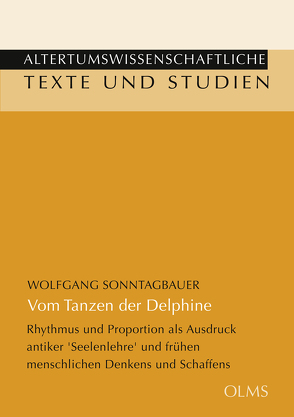
Der Beliebigkeit der heutigen Vorstellung von Rhythmus wird der mythisch-kyklische Rhythmusbegriff entgegengestellt, der alle Bereiche der griechischen Musiké, der 'Musenkunst', umfasst. Nicht nur die Einheit von Musik, Tanz und Sprache ist damit gemeint, sondern auch die Musiké der sakralen Architektur, der Malerei und der Plastik, d. h. aller Bereiche frühen menschlichen Denkens und Schaffens. Die in griechischer Sicht aus Begrenztem und Unbegrenztem, Gemessenem und Unmessbarem, Rationalem und Irrationalem, Bewusstem und Unbewusstem, Menschlichem und Numinosem bestehende Wirklichkeit ist komplementär, d. h. die Gegensätze sind in ihrer Uneindeutigkeit untrennbar miteinander verwoben und gehen ineinander über. Diese nicht objektive, nicht allein den Kategorien von Raum, Zeit und Kausalität unterworfene 'seelische' Wirklichkeit der Griechen kann mit rational-positivistischen Mitteln allein nicht erschlossen werden, sondern es müssen vor allem die Bilder des Mythos bzw. der mythischen 'Philosophie' befragt und zur Deutung herangezogen werden. Die Gestalt und die Entwicklung des Rhythmus bis in die Spätantike sollen vor allem anhand der antiken Metrik, der Musik- und der Proportionstheorie gezeigt werden.****************The arbitrariness of today's notion of rhythm is contrasted with the mythical-cyclical concept of rhythm, which encompasses all areas of the Greek musiké, the 'art of the muse'. Not only the unity of music, dance and language is meant by this, but also the musiké of sacred architecture, of painting and sculpture, i.e. all areas of early human thought and artifacts. Reality, which in the Greek view consists of the limited and the unlimited, the measured and the immeasurable, the rational and the irrational, the conscious and the unconscious, the human and the numinous, is thought to be complementary: in their ambiguity, the opposites are inextricably interwoven and merge into one another. This 'spiritual' reality of the Greeks is non-objective, not solely subject to the categories of space, time and causality; it cannot be unlocked by rational-positivistic means alone, rather the images of myth or mythical 'philosophy' ought to be consulted and be used for interpretation. The character and the development of rhythm up to late antiquity will be demonstrated primarily on the basis of ancient metrics, music and proportion theory.
Aktualisiert: 2023-06-29
> findR *
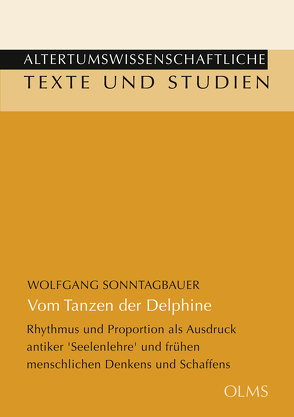
Der Beliebigkeit der heutigen Vorstellung von Rhythmus wird der mythisch-kyklische Rhythmusbegriff entgegengestellt, der alle Bereiche der griechischen Musiké, der 'Musenkunst', umfasst. Nicht nur die Einheit von Musik, Tanz und Sprache ist damit gemeint, sondern auch die Musiké der sakralen Architektur, der Malerei und der Plastik, d. h. aller Bereiche frühen menschlichen Denkens und Schaffens. Die in griechischer Sicht aus Begrenztem und Unbegrenztem, Gemessenem und Unmessbarem, Rationalem und Irrationalem, Bewusstem und Unbewusstem, Menschlichem und Numinosem bestehende Wirklichkeit ist komplementär, d. h. die Gegensätze sind in ihrer Uneindeutigkeit untrennbar miteinander verwoben und gehen ineinander über. Diese nicht objektive, nicht allein den Kategorien von Raum, Zeit und Kausalität unterworfene 'seelische' Wirklichkeit der Griechen kann mit rational-positivistischen Mitteln allein nicht erschlossen werden, sondern es müssen vor allem die Bilder des Mythos bzw. der mythischen 'Philosophie' befragt und zur Deutung herangezogen werden. Die Gestalt und die Entwicklung des Rhythmus bis in die Spätantike sollen vor allem anhand der antiken Metrik, der Musik- und der Proportionstheorie gezeigt werden.****************The arbitrariness of today's notion of rhythm is contrasted with the mythical-cyclical concept of rhythm, which encompasses all areas of the Greek musiké, the 'art of the muse'. Not only the unity of music, dance and language is meant by this, but also the musiké of sacred architecture, of painting and sculpture, i.e. all areas of early human thought and artifacts. Reality, which in the Greek view consists of the limited and the unlimited, the measured and the immeasurable, the rational and the irrational, the conscious and the unconscious, the human and the numinous, is thought to be complementary: in their ambiguity, the opposites are inextricably interwoven and merge into one another. This 'spiritual' reality of the Greeks is non-objective, not solely subject to the categories of space, time and causality; it cannot be unlocked by rational-positivistic means alone, rather the images of myth or mythical 'philosophy' ought to be consulted and be used for interpretation. The character and the development of rhythm up to late antiquity will be demonstrated primarily on the basis of ancient metrics, music and proportion theory.
Aktualisiert: 2021-05-20
> findR *

Das Buch unternimmt einen neuerlichen Anlauf, das nach wie vor bestehende Dunkel um die schon in der Antike als “Hochzeitszahl” bezeichnete Stelle in der platonischen Politeia (545c-547a) zu lichten. Jahrzehntelange Beschäftigung mit griechischer Proportions- und Musiktheorie bzw. den mathematischen Wissenschaften des Quadriviums haben den Autor auf diesen Weg gebracht. Es zeigt sich, wie sehr Platon im Strom frühgriechischen, d. h. orphisch-pythagoreisch-vorsokratischen Denkens steht und dieses besonders in der “Hochzeitszahl” in andeutend-verschlüsselter Weise noch einmal einzuholen versucht.
Wolfgang Sonntagbauer, geboren 1949, studierte von 1968-1973 Klassische Philologie und Sportwissenschaften an der Universität Salzburg und war anschließend 37 Jahre Lehrer am Bundesrealgymnasium Salzburg. 1995 Promotion in Klassischer Archäologie über den Kanon des Polyklet. Weitere Publikationen zur griechischen Architekturtheorie, im Besonderen zum dorischen Tempel bzw. zur griechischen Proportions- und Musiktheorie.
***
This book makes a new attempt to shed light on the continuing darkness which has since antiquity surrounded the passage in Plato’s Republic known as the “marriage number” (545c-547a). The author has come to his conclusions after decades of studying Greek theories of proportion and of music as well as the mathematical science of the Quadrivium. The book shows how deeply Plato is immersed in the currents of early Greek – Orphic-Pythagorean-pre-Socratic – thought and attempts to recover this once again in suggestive and coded form, especially in the “marriage number”.
Wolfgang Sonntagbauer, born in 1949, studied Classics and Sport at the University of Salzburg from 1968-1973 and taught for 37 years at the Bundesrealgymnasium in Salzburg. In 1995 he gained his doctorate in Classical Archaeology with a thesis on the Kanon of Polykleitos. He has published other works on Greek architectural theory, particularly on the Doric temple, and on Greek theories of music and proportion.
Aktualisiert: 2022-05-12
> findR *
MEHR ANZEIGEN
Bücher zum Thema Proportionstheorie
Sie suchen ein Buch über Proportionstheorie? Bei Buch findr finden Sie eine große Auswahl Bücher zum
Thema Proportionstheorie. Entdecken Sie neue Bücher oder Klassiker für Sie selbst oder zum Verschenken. Buch findr
hat zahlreiche Bücher zum Thema Proportionstheorie im Sortiment. Nehmen Sie sich Zeit zum Stöbern und finden Sie das
passende Buch für Ihr Lesevergnügen. Stöbern Sie durch unser Angebot und finden Sie aus unserer großen Auswahl das
Buch, das Ihnen zusagt. Bei Buch findr finden Sie Romane, Ratgeber, wissenschaftliche und populärwissenschaftliche
Bücher uvm. Bestellen Sie Ihr Buch zum Thema Proportionstheorie einfach online und lassen Sie es sich bequem nach
Hause schicken. Wir wünschen Ihnen schöne und entspannte Lesemomente mit Ihrem Buch.
Proportionstheorie - Große Auswahl Bücher bei Buch findr
Bei uns finden Sie Bücher beliebter Autoren, Neuerscheinungen, Bestseller genauso wie alte Schätze. Bücher zum
Thema Proportionstheorie, die Ihre Fantasie anregen und Bücher, die Sie weiterbilden und Ihnen wissenschaftliche
Fakten vermitteln. Ganz nach Ihrem Geschmack ist das passende Buch für Sie dabei. Finden Sie eine große Auswahl
Bücher verschiedenster Genres, Verlage, Autoren bei Buchfindr:
Sie haben viele Möglichkeiten bei Buch findr die passenden Bücher für Ihr Lesevergnügen zu entdecken. Nutzen Sie
unsere Suchfunktionen, um zu stöbern und für Sie interessante Bücher in den unterschiedlichen Genres und Kategorien
zu finden. Unter Proportionstheorie und weitere Themen und Kategorien finden Sie schnell und einfach eine Auflistung
thematisch passender Bücher. Probieren Sie es aus, legen Sie jetzt los! Ihrem Lesevergnügen steht nichts im Wege.
Nutzen Sie die Vorteile Ihre Bücher online zu kaufen und bekommen Sie die bestellten Bücher schnell und bequem
zugestellt. Nehmen Sie sich die Zeit, online die Bücher Ihrer Wahl anzulesen, Buchempfehlungen und Rezensionen zu
studieren, Informationen zu Autoren zu lesen. Viel Spaß beim Lesen wünscht Ihnen das Team von Buchfindr.







